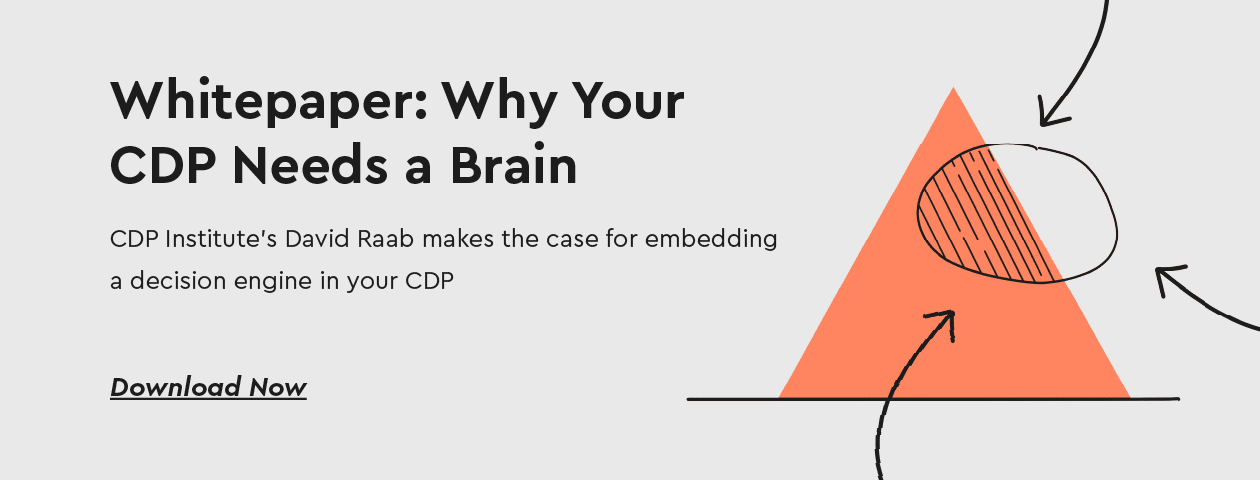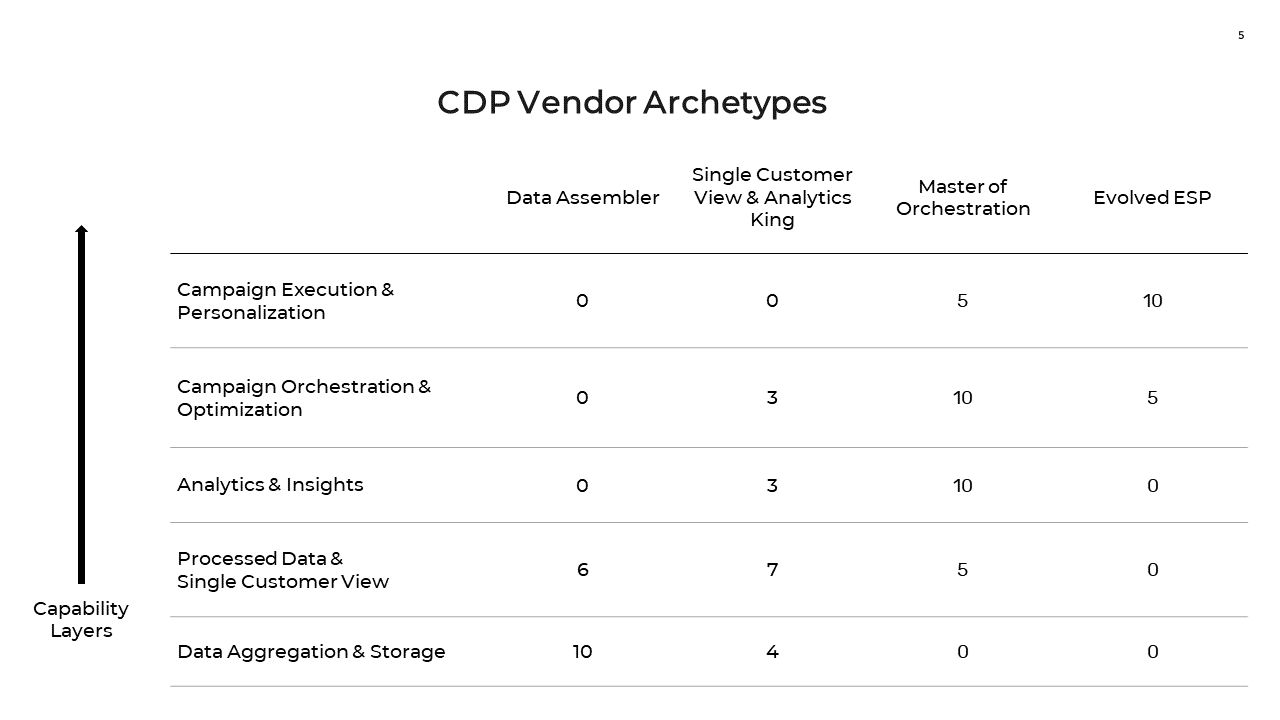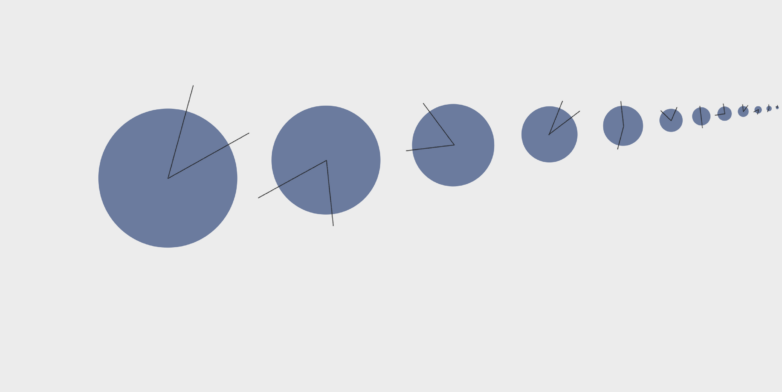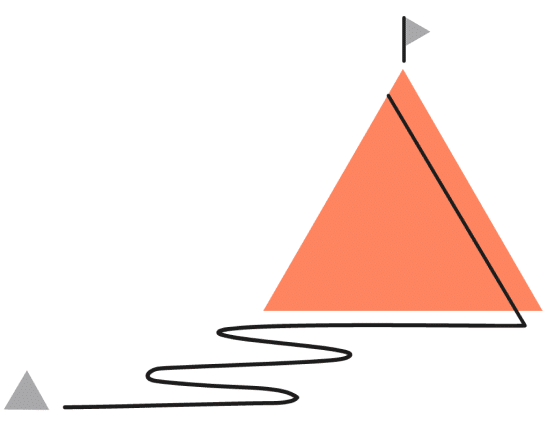What is a Customer Data Platform?
A Customer Data Platform (CDP) is software designed to consolidate and manage customer data from multiple sources, within and without the company. The CDP aggregates all customer data, cleanses it and unifies it into a single customer view that can be used for marketing purposes and also accessed by other systems.
CDPs allow marketing teams to leverage customer data for objectives including customer segmentation, personalized communications and analytics aimed at gleaning customer insight, all with minimum involvement from IT.
Your options for CDP-led orchestration.
Watch the 2-minute video exploring the single customer view or read the transcript here.
What Problems do Customer Data Platforms Solve?
As customers interact with companies across more channels, through more systems, with more frequency, customer data is rapidly becoming fragmentated. This has fueled a demand for systems that assemble the data from its many sources into a single, complete and consistent customer view, and then share the result with every other system that needs it. This is exactly what CDPs do.

How are all CDPs the Same?
While there are many different CDPs on the market, they all have share some key characteristics. According to the CDP Institute, a CDP is a, “marketer-managed system that creates a persistent, unified customer database that is accessible to other systems”. This definition has three primary components:
- “marketer-managed” means the CDP is packaged software that marketers control via configuration. The primary contrast is with IT-managed systems that are usually custom-built software or, even if they are off-the-shelf packages, are managed by the corporate IT department. In practice, IT is almost always involved in a CDP and should be: they are ultimately responsible for key company data, which certainly includes customer information. Also, in practice, departments outside of marketing often use CDP data, especially for customer-facing activities such as sales and service. Sometimes the CDP might even be managed by one of those other departments. What’s important is that business users are in control.
- “persistent, unified customer database” – “Persistent” means the CDP creates an actual database of its own, rather than simply accessing information that’s stored in other systems or acting as a hub that transfers data from one system to another without keeping its own copy. “Unified” means the CDP connects all data related to the same customer to present a Single Customer View. “Customer database” indicates the CDP is organized around people, not other objects such as Web pages or products. It also indicates that the CDP stores customer identifiers, such as names, phone numbers, account numbers, and addresses. A CDP might also create profiles of anonymous customers, although there will still be at least an internal ID to track these. “Customer” actually applies to any individual that has interacted with the company, including prospects who have not yet made a purchase. The CDP may store non-customer data, such as product details and marketing materials, but only to help present a complete view of each customer.
- “accessible to other systems” means the CDP can share its data with any system that is able to accept it. This almost always means there’s an API (application program interface) to extract data directly from the CDP via API calls or database queries. Sometimes the data can only be shared through file exports. All data ingested by the CDP should be available for sharing, although some effort is often needed to place the data in formats that other systems can manage. This may mean that some data in the CDP isn’t available on demand without some additional preparation.
In short, every CDP ingests nearly any type of data from source systems, stores it without losing any detail, converts it into a complete and consistent view of each customer, and makes the result easily available for various purposes.
Whitepaper: Why Your CDP Needs a Brain
CDP Institute’s David Raab makes the case for embedding a decision engine in your CDP
How do CDPs Differ from One Another?
Despite sharing some common features, CDPs vary quite widely. From a user’s perspective, the most significant differences relate to product scope. In very broad terms, CDPs can be grouped into three categories:
- Data only – All CDPs build and share a unified customer database.
- Data and analytics – These CDPs build the database and provide integrated analytics, such as segmentation and predictive modeling.
- Data, analytics and engagement – These build the database, provide analytics, and select personalized communications for individual customers. They then send the list of customers and associated messages to a delivery system, such as an email engine, mobile app, or Web content manager, to be delivered.
Some CDPs move past engagement to include their own delivery systems, most often for email. Many marketers find this appealing since it reduces the number of systems they need to integrate. Systems that do this are still considered CDPs so long as users have the option to use external delivery systems as well. The distinction is important because one the primary reasons for buying a CDP is to let marketers use the delivery systems of their choice.

Frequently Asked Questions
Is Optimove a CDP?
Yes, Optimove is a realtime Customer Data Platform (CDP). Optimove’s Relationship Marketing Hub helps you drive measurable growth through smarter orchestration, measurement and optimization of campaigns, at scale. A science-first approach means bringing together all customer data into a single customer view that enables you to fully understand your customers, while allowing Optimove to autonomously surface valuable insights and optimize campaign effectiveness. To maximize actual business impact, Optimove allows you to select and optimize for the business KPIs that are most important to you.
How does Optimove access my customer data?
Optimove can access databases containing customer data using a number of methods:
- Creating a database-to-database connection. With this method, Optimove will connect directly to the raw data and import it to Optimove’s database for transformation.
- If your data is on Snowflake, you can share selected objects in the database in your account with Optimove’s Snowflake accounts. Using Snowflake’s data sharing, a replica of your database will be exposed to Optimove and there will be no need for an ETL process to be created in this case.
- Connecting to the client’s Web Services API and using the API’s standard methods to extract the required data.
- If the above methods are unavailable, Optimove can receive exported data files (e.g., CSV, database dumps). The files can be made available for download on the client’s SFTP server, or they can be uploaded to an SFTP server provided by Optimove.

Is Optimove a Customer Data Platform?
Absolutely! Optimove’s Science-First Relationship Marketing Hub is a CDP and much more. Beyond providing a Single Customer View and in-depth analytical reports, Optimove leverages AI to actually foster emotionally intelligent relationships that maximize the value of every customer via true 1:1 personalized multi-channel customer communications. Visit the Optimove Product page or request a Web demo to learn how you can use Optimove’s Relationship Marketing Hub to drive measurable growth through your existing customers.
Get a personalized tour of Optimove
Let us show you how to go from tens to hundreds of segments


